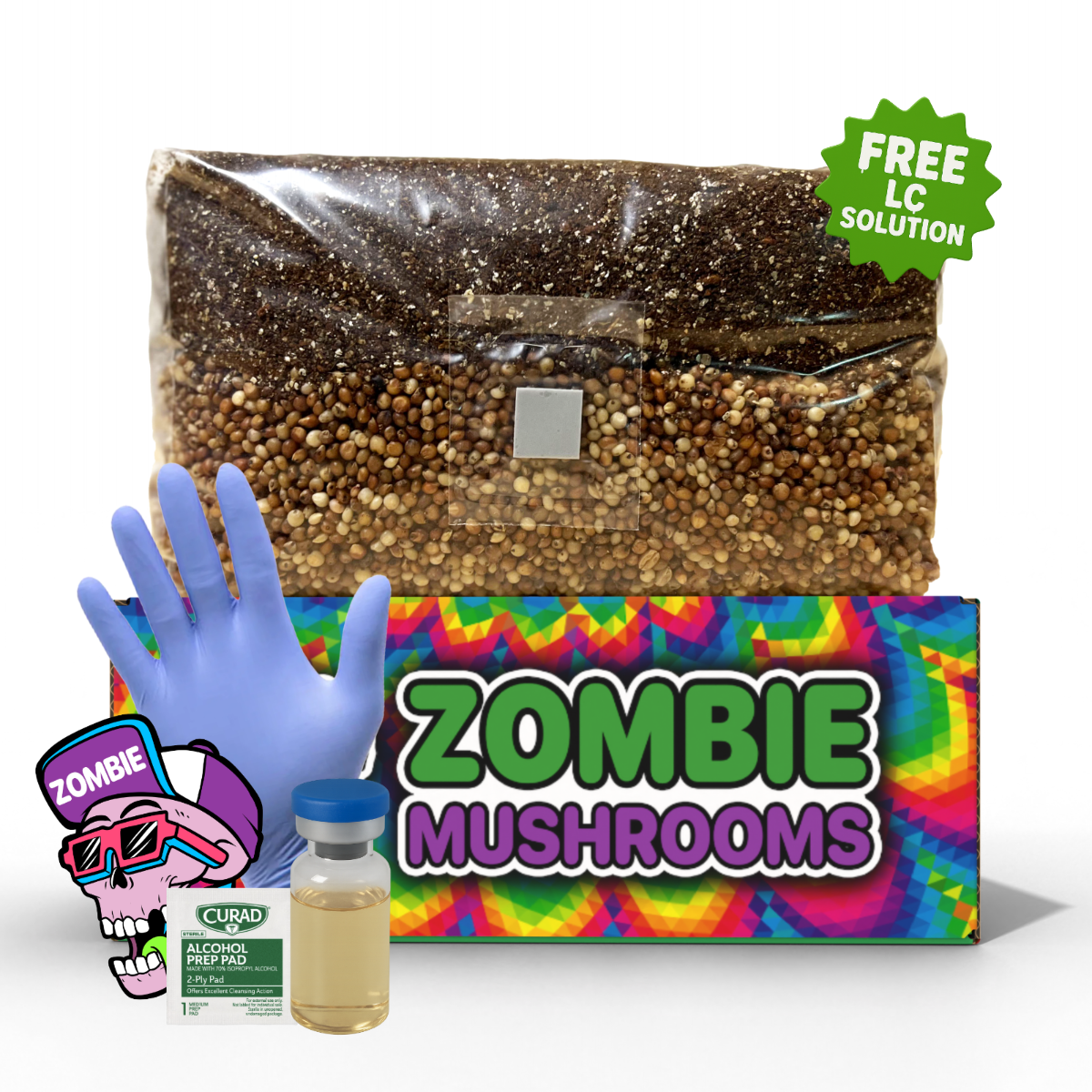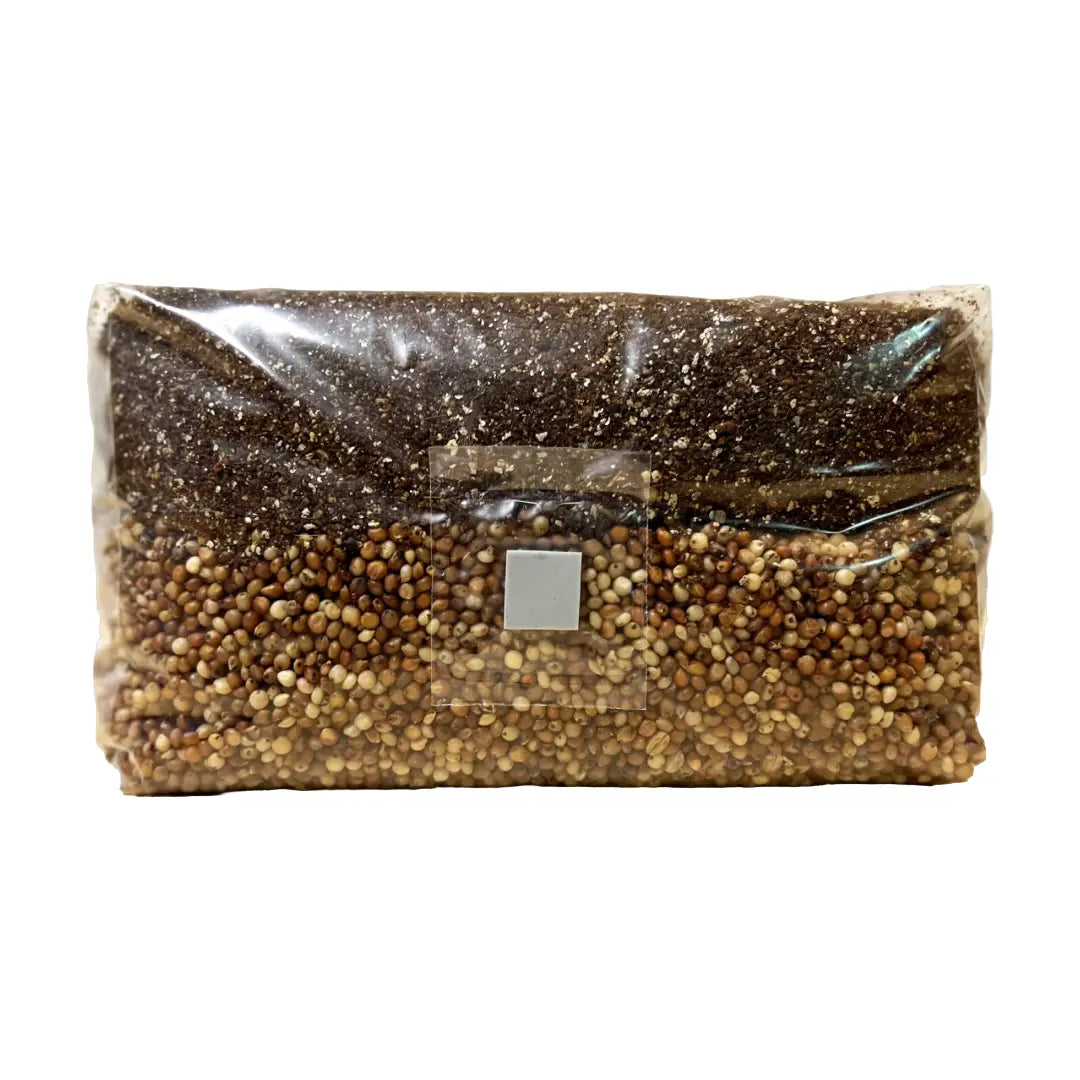⬇️ Prefer to listen instead? ⬇️
- 68% of hobbyist mushroom growers begin with pre-inoculated kits (American Mushroom Institute, 2021).
- Organic mushroom kits certified by USDA ensure toxin-free, eco-friendly cultivation.
- The global mushroom cultivation market is projected to reach $24.05 billion by 2028 (Grand View Research, 2021).
- Most mushrooms fruit best between 60–75°F with moderate humidity levels.
- Serious growers use laminar flow hoods, pressure cookers, and agar cultures for sterile propagation.
Mushroom cultivation is rising in popularity thanks to its blend of sustainability, nutrition, and do-it-yourself satisfaction. Whether you're a culinary enthusiast, a health-conscious consumer, or someone interested in sustainable gardening, choosing the right mushroom growing supplies is crucial. From simple mushroom grow kits to fully equipped home labs, understanding your needs, environment, and long-term goals helps ensure a successful and rewarding experience.

How Mushroom Growing Skills Grow: From Beginner to Advanced
Every mushroom grower takes their own path, but most follow a similar way as they get better at growing. Starting small and simple often works best for beginners and helps them get ready for more complex projects. Knowing where you are as a grower will help you pick the right supplies. This helps you avoid buying things too early or making things harder than they need to be.
Beginner: Low-Hassle Growing
Beginners are most successful when they start with plug-and-play solutions. A mushroom grow kit is typically a fully colonized block of substrate that's pre-inoculated with mushroom mycelium. These kits don't need much work—just mist them often and wait. They’re ideal for those looking to test the waters without getting overwhelmed.
Intermediate: Expanding Your Toolkit
Once you’ve experienced the thrill of your first flush and understand basic concepts like fruiting conditions, humidity, and contamination, you’re ready to level up. At this stage, growers are eager to try using grain spawn, prepare their own substrates, or experiment with bulk bags for higher yields. Intermediate supplies require more precision, but also offer greater rewards.

Intermediate Supplies: Taking Your Skills to the Next Level
If you’ve harvested from one or two kits and want to grow more, intermediate mushroom growing supplies let you do more things and get bigger harvests.
Grain Spawn: The Heart of DIY Cultivation
Grain spawn is sterilized grain (often rye, millet, or corn) inoculated with mushroom mycelium. Unlike kits, grain spawn lets you add the mycelium to your own growing stuff. You can control how much you grow and what nutrients it gets. Benefits include
- Higher yields over multiple flushes
- Flexibility in choosing substrate types
- Reduced cost per grow over time
Substrates to Match Your Mushroom
Substrates vary based on the species
- Straw – Ideal for oysters and enoki
- Sawdust – Great for lion’s mane and shiitake
- Coco coir & vermiculite – A common base for many gourmet fungi
Substrates should be pasteurized or sterilized based on species sensitivity and volume of production. For this reason, other intermediate supplies often include
- Polypropylene grow bags with filter patches
- Mixing bins or totes
- Clean-room gloves and masks
- Spray bottles and water meters
This setup lets you try new things while keeping the risk of contamination under control.

Advanced Mycology Supplies: Your At-Home MycoLab
Advanced growers who want to get better at growing or grow a lot more eventually buy lab-grade mushroom growing supplies. The main hard part (and something you can do well) at this point is getting and keeping things sterile. This is especially true when you change steps, like working with cultures or putting mycelium into substrate.
Essential Advanced Tools
Here are must-haves for the serious hobbyist or small-scale mushroom farmer:
- Laminar flow hood – Provides ultra-clean airflow to protect sterile procedures
- Pressure cooker/autoclave – Crucial for sterilizing grain and substrate at high temps
- Agar plates – Used for isolating strains, cloning fruiting bodies, and archiving mycelium
- Petri dishes, scalpels, and inoculation loops – Precision tools for clean transfer
Here, you get full control over everything you do. This includes the genetics you use, where you get your growing stuff, and setting the exact right conditions for growing.

Essential Tools Every Grower Should Know About
No matter how much you've grown before, having the right tools can make your grow work well or fail.
Core Tools
- Spray bottle – Controls humidity around fruiting blocks
- Fruiting chamber – A tub, tent, or cabinet maintaining temperature and moisture
- Humidity & temperature monitors – Digital hygrometers offer real-time readings
- Grow lights – For low-light environments or simulating natural cycles
- Micro filters & micropore tape – For sealing bags or jars during colonization
Even simple tools like headlamps or tongs can improve cleanliness and convenience. With the right tools, growing mushrooms can be less stressful and more enjoyable.

Matching Kits and Supplies to Growing Environments
Your available space largely determines which mushroom growing supplies are best suited to you.
Indoor Environments
Ideal for
- Smaller species like oyster, lion’s mane
- Grow kits or mini fruiting chambers
- Enhanced humidity control via spraying or humidity tents
Challenges include managing airflow and preventing mold in enclosed areas.
Outdoor Environments
Best for
- Seasonal species like Shiitake on logs
- Garden integration using wood chip beds or mulch layering
- Mixtures of ambient weather dependency and natural resilience
Growers in mild climates can get a lot of mushrooms without much work once they've started, especially with mushrooms that grow on wood.

Scaling Up: Small Batch Commercial or Microfarm Systems
When growing is more than just a hobby but not a big business, you’ll need professional-level supplies to grow more and make more money.
Consider Investing In
- Bulk substrates and grain spawn at wholesale rates
- Impulse sealers for grow bags
- Bag clamps, tunnels, or flow bins for automated inoculation
- Digital logs or spreadsheets – Keep tabs on batches, yields, and cycle timing
- Connect with others – Groups and online communities make it easier to get what you need.
According to the Food and Agriculture Organization (FAO, 2020), small mushroom farms can get 25 pounds per square meter. This makes it a good option for people in cities and those using permaculture methods.

Where Mushroom Grow Kits Fall Short
Grow kits are great, but after a while, they stop you from learning more and growing as much as you could.
Common Limitations
- Only good for 1 to 3 flushes before exhaustion
- You can't change the growing stuff or use different genetics.
- Doesn’t teach core skills like pasteurization or sterile transfer
To get better, look for ways to learn
- Online mycology forums (e.g., MushroomCultivator)
- YouTube tutorials on DIY laminar hoods
- Books like Paul Stamets' "Growing Gourmet and Medicinal Mushrooms"
- Workshops or cooperative training programs

Choosing the Right Supplier: Your Fungal Ally
Good suppliers will help you succeed more often and keep your money safe.
What to Look For
- Lab-verified strains with documented success in home setups
- Transparent sourcing for both spores and substrate materials
- Live support or extensive documentation
- Positive reputation through verified reviews or growing communities
With projections of a $24.05 billion mushroom market by 2028 (Grand View Research, 2021), many new suppliers are popping up—so vet carefully before you buy.

Tips for Success: Avoiding Common Mistakes with Your First Grow
No matter how good your mushroom growing supplies are, mistakes in technique can ruin your harvest.
Top Pitfalls to Avoid
- Touching sterile components without gloves
- Using tap water that introduces chlorine or contaminants
- Letting your setup dry out
- Not enough airflow or light
Do the same things each time, watch your grow every day, and write down what happens so you can get better later.

Popular Mushroom Types and Their Equipment Requirements
Here’s a look at a few beloved species and what they need:
| Mushroom | Equipment Needs | Notes |
|---|---|---|
| Oyster | Straw, sawdust, misting bottle | Fast growing, ideal for beginners |
| Lion’s Mane | Fruiting chamber with high humidity control | Slow colonizer, sensitive to drying |
| Shiitake | Hardwood logs or dense sawdust substrate | Longer cultivation timeline |
| Reishi | Filtered bags, ambient light, controlled airflow | Medicinal, requires patience |
Knowing where the mushrooms you grow naturally live helps you make the best conditions for them.

DIY vs Pre-Made: Which Route is Right for You?
Choosing between an organic mushroom kit and a DIY approach depends on your goals, patience, and budget:
| Factor | Pre-Made Kits | DIY Setups |
|---|---|---|
| Learning Curve | Low | Medium to High |
| Time Commitment | Minimal | Higher, ongoing |
| Cost | $20–$40 | $50+ upfront, lower repeat cost |
| Output | 1–2 flushes | 3+ flushes or bulk |
| Best For | Beginners, small spaces | Hobbyists and aspiring sellers |
Choose Based on Goals, Space & Time
Mushroom cultivation is fulfilling at any level. Start with a mushroom grow kit to get mushrooms fast and with little work. Moving on to grain spawn, pasteurized substrate, and tools like pressure cookers or laminar flow hoods lets you learn by doing and could even lead to selling mushrooms. Each time you harvest gives you new ideas. Let your mushroom growing grow with you.



